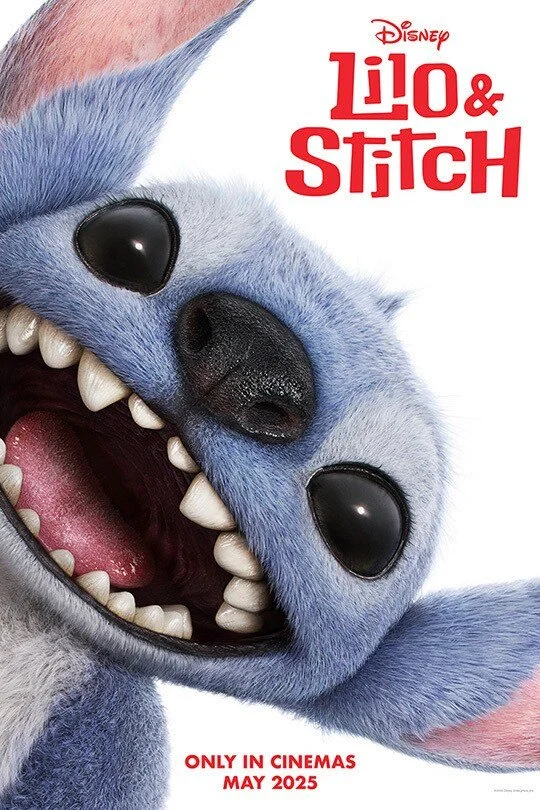Lilo & Stitch
"Ohana" means “money”.
I hate live-action remakes. I find them lazy, greedy, and utterly unnecessary. That doesn't mean some of them don't end up being decent. But now, the corporate, money-grabbing hands of Disney have reached for, in my opinion, one of the studio’s most touching, most iconic, and genuinely brilliant creations — the 2002 cult classic Lilo & Stitch.
Still, money must be made. People go to see these, kids enjoy them, and so here we are — on opening weekend — watching yet another new-old Disney project being repackaged for modern audiences.
We all know the story of Lilo & Stitch, no point going into detail. And what stands out immediately is that this film sticks closely to the original script — maybe even trims it down in places. But at least they approached the story with a degree of respect. No major reimaginings, no bizarre detours. And for that alone, a small thank you is in order.
This is by no means Disney’s worst live-action remake — we’ve seen examples across the whole spectrum, from absolute disasters to surprisingly solid reinterpretations. So where does Lilo & Stitch (2025) land? Somewhere in the middle.
As someone who’s long outgrown childhood, but still vividly remembers watching the original on VHS, I don’t find this adaptation offensive. But I also see no reason for it to exist. There’s no new lens through which the story is told (and no, that’s not the same as the reimaginings and detours I already said I was glad they skipped) — the only real change is the switch from animation to live-action, with real locations and real actors. And that’s exactly where the film begins to fall apart.
Yes, the CGI is decent. Stitch is rendered well and blends naturally into scenes. But the presence of real people strips the story of that intangible magic — that weightless charm — the original held. A lot of that hinges on the cast, and unfortunately, the casting here doesn't quite land.
Though everyone looks good and seems charming on the surface, the two leads — Maia Kealoha as Lilo and Sydney Elizebeth Agudong as Nani — lack even a fraction of the chemistry that existed between their animated counterparts. Neither performance feels fully committed; at times, it’s like watching a rehearsal. The same goes for Kaipo Dudoit as David — a character so underwritten here he might as well not be in the film at all. There’s no emotional arc, no real presence, and certainly none of the gentle longing or loyalty that defined him before. The only one who genuinely fits her role is Amy Hill as Tūtū. And of course, Stitch — though animated — carries his weight. But an animated creature alone can’t carry the emotional resonance of a story that should be driven by its human characters.
A lot of the fun, chaotic energy of the original is gone. The iconic messy moments are replaced by polished, watered-down versions. There’s no sense of real disorder or emotional turmoil — just a clean, kid-friendly package.
What we’re left with is a toothless version of a story that once reminded us of the importance of family — not just the one you’re born into, but the one you build around you. And yes, one of the final scenes, when Stitch utters the iconic line “Ohana means family,” still stings a little. But only because I remember what it felt like hearing it for the first time as a kid.
I can't even call this a reinterpretation for a new generation. Sure, there are smartphones now, a more modern soundtrack, even a TikTok joke. But anyone who’s ever seen the original will find it hard to set that aside and fully enjoy this new take.
So we’re left to witness yet another box office success in Disney’s relentless IP recycling machine. But we also still hold the power to shape what the next generation sees. We can choose to show them where this story really came from — and help them feel that strange, unexplainable magic we once felt.
5/10




